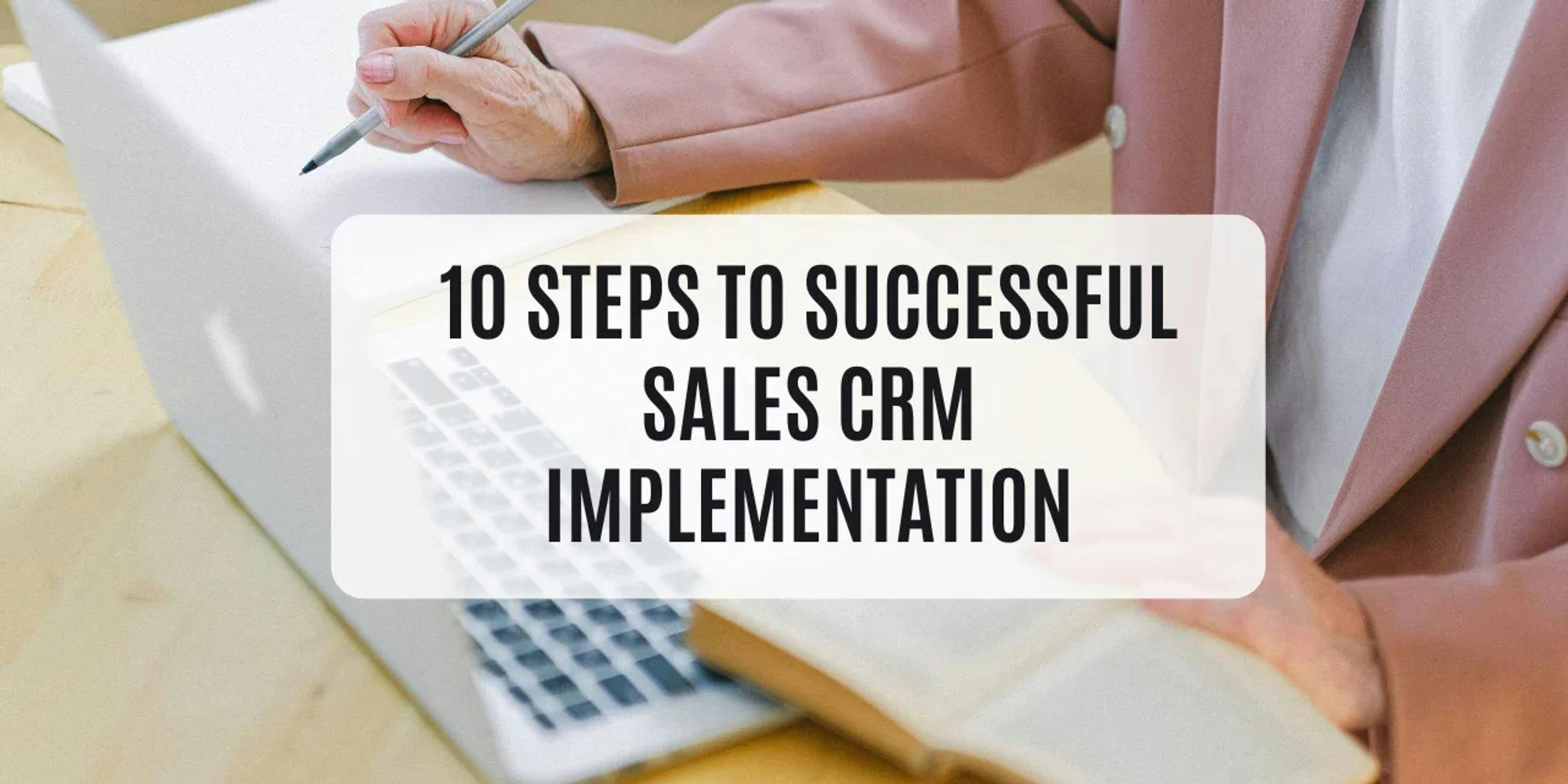10 Steps To Successful Sales CRM Implementation


A CRM (customer relationship management) system is a powerful tool that can help you manage your sales pipeline, improve customer satisfaction, and increase revenue. However, implementing a CRM is not a simple task. It requires careful planning, execution, and evaluation to ensure that you get the most out of your investment. In this blog post, we will share with you 10 steps to successful sales CRM implementation, and introduce you to Teamopipe, one of the most user-friendly and quick onboarding CRM software in the market.
Step 1: Define Your CRM Goals And Strategy
Before you implement a CRM, you need to have a clear vision of what you want to achieve with it and how it will align with your business objectives. Some common CRM goals are to increase customer satisfaction, boost sales performance, improve lead generation and conversion, and automate repetitive tasks. You should also define your CRM strategy, which is how you will use the CRM to achieve your goals. For example, you may want to use the CRM to segment your customers, track their interactions, follow up with them, and provide personalized offers.
Step 2: Choose A CRM That Suits Your Needs And Budget
There are many types of CRM software available in the market, each with different features, functionalities, and prices. You need to do some research and compare different options to find the best fit for your business size, industry, and requirements. You may also want to consider the ease of use, integration, customization, and support of the CRM software. One of the CRM software that we recommend is Teamopipe, which is designed for small and medium-sized businesses. Teamopipe is a cloud-based CRM that offers a simple and intuitive interface, seamless integration with Gmail flexible customization options, and excellent customer support. Teamopipe also has a quick onboarding process that allows you to set up your account and start using the CRM in minutes.
Step 3: Clean Up Your Customer Data
One of the most important CRM implementation best practices is to make the switch with clean customer data. Over time, it’s easy for lead and customer data to become a bit jumbled and disorganized. Cleaning up your data beforehand gives your reps a fresh start in a new system. You can use tools like Excel or Google Sheets to sort, filter, and remove duplicates from your data before importing it to your CRM. You should also make sure that your data is consistent, accurate, and complete.
Step 4: Train Your Team On How To Use The CRM
A CRM is only as good as the people who use it. You need to ensure that your team is well-trained and comfortable with the new system before you launch it. You can use various methods such as online tutorials, webinars, videos, manuals, or workshops to educate your team on the features and benefits of the CRM. You should also provide them with feedback and support during the transition period. Teamopipe offers a comprehensive training program that covers everything from the basics to the advanced features of the CRM. You can also access their help center or contact their support team anytime you have questions or issues.
Step 5: Configure And Customize Your CRM
Once you have chosen your CRM software and trained your team on how to use it, you need to configure and customize it according to your business needs and preferences. This may include setting up your sales stages, pipelines, fields, workflows, reports, dashboards, permissions, notifications, and more. You should also test your CRM configuration before going live to ensure that everything works as expected. Teamopipe allows you to easily configure and customize your CRM with drag-and-drop functionality and pre-built templates. You can also create custom fields and workflows to suit your specific processes.
Step 6: Import Your Customer Data
After you have configured and customized your CRM software, you are ready to import your customer data from your previous system or source. This may include contact information, notes, activities.
Step 7: Integrate Your CRM With Other Tools
One of the advantages of using a CRM is that you can integrate it with other tools that you use for your business, such as email, calendar, social media, marketing, accounting, and more. This way, you can streamline your workflows, automate your tasks, and sync your data across different platforms. You should check the compatibility and availability of the integrations that you need before choosing a CRM software.
Step 8: Monitor And Measure Your CRM Performance
After you have launched your CRM software, you need to monitor and measure its performance and impact on your business. You should track key metrics such as sales revenue, customer retention, conversion rate, customer satisfaction, and more. You should also collect feedback from your team and customers on how they use and perceive the CRM software. You can use the reports and dashboards that your CRM software provides to analyze your data and identify trends, patterns, and insights. Teamopipe has a powerful reporting feature that allows you to create custom reports and dashboards based on your own criteria and goals.
Step 9: Optimize And Improve Your CRM
Implementing a CRM is not a one-time event, but an ongoing process. You need to constantly optimize and improve your CRM software to keep up with the changing needs and expectations of your business and customers. You should review your CRM goals and strategy regularly and make adjustments as needed. You should also update your CRM software to the latest version and take advantage of new features and enhancements. Teamopipe is constantly improving its CRM software based on user feedback and market trends. You can always access the latest version of Teamopipe without any hassle or extra cost.
Step 10: Celebrate Your CRM Success
Finally, you should celebrate your CRM success and reward your team for their hard work and achievements. You should also share your CRM success stories with your customers and prospects to showcase your value proposition and credibility. You can use various channels such as email, social media, blog posts, case studies, testimonials, and more to spread the word about your CRM success. Teamopipe can help you create engaging and compelling content to share your CRM success stories with your audience.
